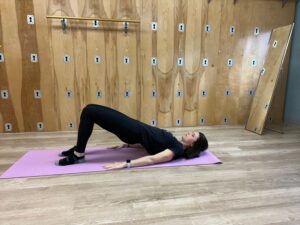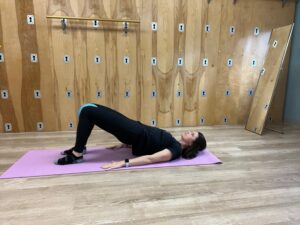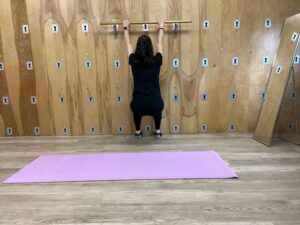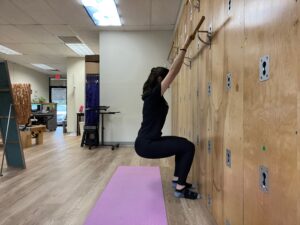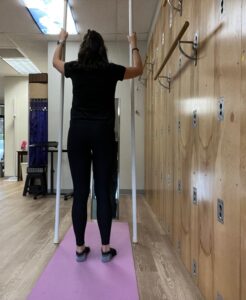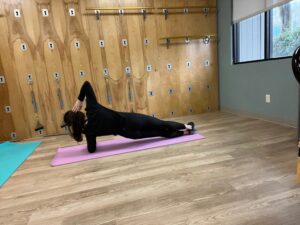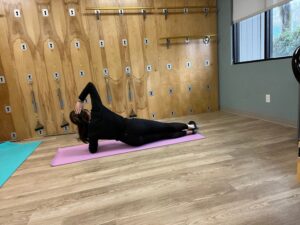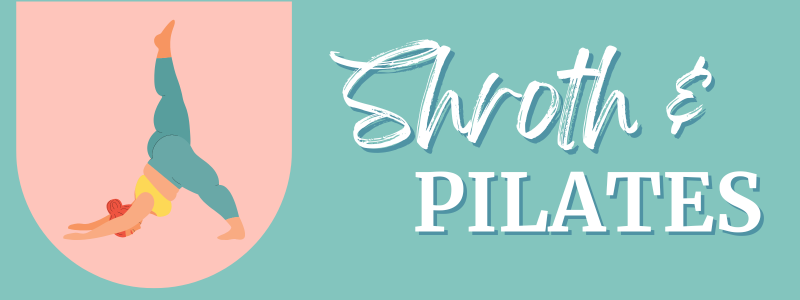
We are going to delve into the study that looks at the effects of combining Schroth and Pilates exercises on adolescents with idiopathic scoliosis. The study went on for 24 weeks, and the results showed some fantastic improvements! Let’s find out what these exercises did.

Adolescent idiopathic scoliosis (AIS) is a unique journey for young individuals, marked by the sideways curvature of the spine. AIS is characterized by a side-to-side curvature of the spine. It usually develops during the adolescent growth spurt, which often occurs just before puberty. The term “idiopathic” indicates we do not know the cause of the scoliosis, but it seems to have both genetic and environmental factors and it tends to affect more females than males. AIS can affect both physical and emotional aspects of a teenager’s life.
What makes Schroth’s exercises stand out? The Schroth Method is a 3-dimensional treatment approach designed to halt curve progression, alleviate pain, and enhance postural appearance for both adolescents and adults with scoliosis. (Note: Although this research study focused on adolescents, the Schroth method and Pilates are popular for adults of all ages as well.) Schroth exercises work the body in a 3-dimensional plane—forward, backward, and side to side. This is unlike traditional exercises that operate in a single plane. These exercises specifically target the back and front sides of the scoliotic spine.

- Improvement of 3D Trunk Shape and Global Posture: Addressing the three-dimensional nature of scoliosis, Schroth exercises strive for a balanced and aligned trunk.
- Halt Progression of the curve: The primary goal is to impede scoliosis progression and, when possible, correct curvature for enhanced spinal health.
- Coping with Deformity and Treatment: Empowering individuals to confront challenges posed by scoliotic deformities, fostering a proactive approach to their treatment journey.
- Diminish Functional Limitations: Targeting functional limitations associated with
This study examined 69 adolescents (ages 10-17) with idiopathic scoliosis, featuring Cobb angles ranging from 10-45 degrees. Each participant devoted 60 minutes daily for 24 weeks to selected Schroth and Pilates methods. The exercises included basic correction of sitting, self-correction in front of the mirror, hanging, stretching the weak side, strengthening back muscles, and thoracolumbar spine correction- see picture below.
The study showed those that who did the exercises had improvements in key areas
- Chest Expansion: Participants experienced improved chest mobility, indicating a positive impact on respiratory function.
- Trunk Deviation: A reduction in trunk deviation was observed, signaling progress in spinal alignment.
- Vital Capacity: Improved vital capacity suggested positive implications for respiratory health and overall well-being.
- Waist Asymmetry: Reduction in waist asymmetry indicated positive effects on both the aesthetic and structural dimensions of scoliosis.
In layman’s terms, the study showed improvement in
- Breathing Better: The exercises helped the chest move easier and better, making breathing easier.
- Improved posture: The exercises helped make the back look straighter
- Breathing Easier: Doing the exercises also made it easier for the air to move in and out of the lungs to breathe and stay healthy.
- Looking Good: The exercises even made the way kids’ bodies look better, making them feel great!
The connection between Schroth and Pilates exercises highlighted in this study shows the potential of a comprehensive approach to working with individuals with Adolescent Idiopathic Scoliosis (AIS). These exercises not only target the correction of structural scoliosis but also address the broader spectrum of challenges associated with AIS. The study’s findings show how Schroth exercises have many combined goals, and they could improve the quality of life for for teens dealing with scoliosis.
To sum it up, think of this study as a starting point. It’s saying, “Hey, let’s explore more and use exercises that are made just for you!” It’s a shout-out to doctors, parents, and teens to try out approaches that look at everything, not just the symptoms. The big dream is for everyone with scoliosis to have a life full of confidence and strength.
At Scoliosis PT Jax, we’re all about mixing the Schroth Method with Pilates in our teaching. We guide our clients through these exercises, teaming up to fix posture, handle pain, and slow down how much the curve in the spine changes. It’s like our own superhero training for a strong and healthy back!
Below are a few of our favorite exercises performed in the study.
PILATES
Below there are 3 of our favorite Pilates exercises from the study that we use in the studio regularly..
- Bridge and a bridge with hip adduction
2. Body bridge on swiss ball
3. Quadruped arm and leg raise
SCHROTH
Below there are 3 Schroth exercises that we utilize to encourage and educate our clients on how to improve postural awareness and how to strengthen and lengthen the curve. These Schroth exercises improve and encourage elongation of the spine and focus on improving body awareness.
- Hanging
2. Self Correction Exercise in front of the mirror
3. Lifting the pelvis laterally


